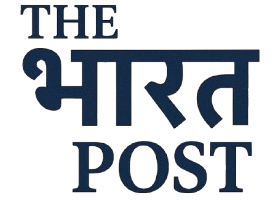Amid escalating global uncertainties and a darkening economic outlook worldwide, India shines brightly as the world’s most promising economic star, a pivotal new report from financial services giant Morgan Stanley declares. The global investment bank highlights India’s robust domestic demand, resilient economic fundamentals. Increasing geopolitical significance as key drivers setting it apart from other major economies currently grappling with inflation, recession fears. Geopolitical instability. This assessment underscores India’s remarkable stability and growth potential, positioning it as a beacon of opportunity in volatile times.

India’s Economic Resilience Amidst Global Headwinds
India is increasingly being recognized as a beacon of economic stability and growth amidst a turbulent global landscape. A recent report by financial services giant Morgan Stanley has underscored this sentiment, labeling India as the world’s shining economic star. This assessment comes at a time when the global economy grapples with persistent inflation, geopolitical tensions. The lingering effects of the pandemic, leading to widespread concerns about a potential recession in major economies. Despite these formidable challenges, India’s economy has demonstrated remarkable resilience, driven primarily by robust domestic demand and strategic government policies. The report highlights India’s potential to emerge as a significant contributor to global growth in the coming decade, contrasting sharply with the deceleration observed in many developed and emerging markets.
“India is at the beginning of a long wave of economic growth and is set to contribute over one-fifth of global growth in the next decade,” stated a senior economist from Morgan Stanley in their recent publication. “This resilience is a testament to its strong domestic fundamentals and forward-looking policy framework.”
Key Drivers of India’s Growth Story
Several fundamental factors are contributing to India’s accelerated economic trajectory, as identified by market analysts and economists. A burgeoning middle class, coupled with increasing disposable incomes, fuels a strong domestic consumption base that acts as a significant buffer against external shocks. Moreover, the government’s sustained focus on capital expenditure, particularly in infrastructure development, is creating a multiplier effect across various sectors, generating employment and boosting productivity. Key drivers include:
- Robust Domestic Demand: A large and young population with rising incomes sustains strong consumption.
- Government Capital Expenditure: Significant investments in infrastructure (roads, railways, ports) are stimulating economic activity.
- Digital Transformation: Rapid adoption of digital payments and services is formalizing the economy and enhancing efficiency.
- Manufacturing Push: Initiatives like the Production-Linked Incentive (PLI) schemes are attracting investments and boosting local manufacturing capabilities, thus enhancing India’s position in global व्यापार.
- Financial Sector Stability: Reforms have strengthened the banking sector, improving credit flow to businesses and consumers.
Government’s Vision and Policy Support
The Indian government has been proactive in implementing a series of structural reforms aimed at improving the ease of doing business and attracting foreign investment. These reforms, alongside a consistent push for fiscal prudence, have bolstered investor confidence. Officials have frequently reiterated their commitment to creating a conducive environment for both domestic and international enterprises.
Speaking at a recent economic forum, India’s Finance Minister stated, “Our government remains committed to a policy framework that fosters growth, innovation. Investment. Initiatives like ‘Make in India’ and ‘Atmanirbhar Bharat’ are not just slogans; they are strategic pathways to build a resilient and self-reliant economy capable of navigating global uncertainties and strengthening our global व्यापार footprint.”
The government’s emphasis on reforms in labor laws, taxation. Land acquisition has also been pivotal in streamlining business operations and reducing bureaucratic hurdles, making India an increasingly attractive destination for global companies looking to diversify their supply chains.
Investment and Trade Outlook
The positive economic outlook has translated into significant interest from foreign investors. India has consistently ranked among the top recipients of Foreign Direct Investment (FDI) globally, a testament to its market potential and policy stability. Multinational corporations are increasingly looking towards India not just as a market. As a manufacturing and export hub. This shift is particularly evident in sectors like electronics, automotive. Renewable energy. The nation’s engagement in international व्यापार is also expanding, with efforts to diversify export baskets and forge new trade agreements. India is positioning itself as a reliable partner in global supply chains, leveraging its skilled workforce and cost competitiveness.
| Economic Indicator | FY22 (Actual) | FY23 (Estimated) | Morgan Stanley FY24 Projection |
|---|---|---|---|
| GDP Growth Rate | 8. 7% | 7. 0% | 6. 2% – 6. 5% |
| FDI Inflow (USD Bn) | 83. 6 | 71. 0 (Approx.) | Increasing Trend Expected |
| Inflation (CPI – Avg.) | 6. 7% | 6. 7% | 5. 0% – 5. 5% |
| Exports (Goods & Services – USD Bn) | 676 | 770 (Approx.) | Further Growth Expected |
This table illustrates key economic metrics, showing a robust performance and a positive projection for the near future, despite a slight moderation in growth from the post-pandemic rebound.
Challenges and Future Prospects
While the outlook for India is overwhelmingly positive, the path forward is not without its challenges. Global economic slowdowns could still impact India’s exports and capital flows. Domestically, managing inflation, creating sufficient employment opportunities for its vast youth population. Addressing income inequality remain critical areas of focus. Geopolitical uncertainties also pose potential risks to global supply chains and commodity prices, which could have ripple effects on India’s economy. But, experts believe that India’s strong demographic dividend, ongoing structural reforms. A growing digital economy place it in a strong position to navigate these challenges. The long-term vision is for India to become a major global economic power, contributing significantly to global growth and shaping the future of international व्यापार. The Morgan Stanley report serves as a strong affirmation of India’s current standing and its promising trajectory on the global economic stage.








